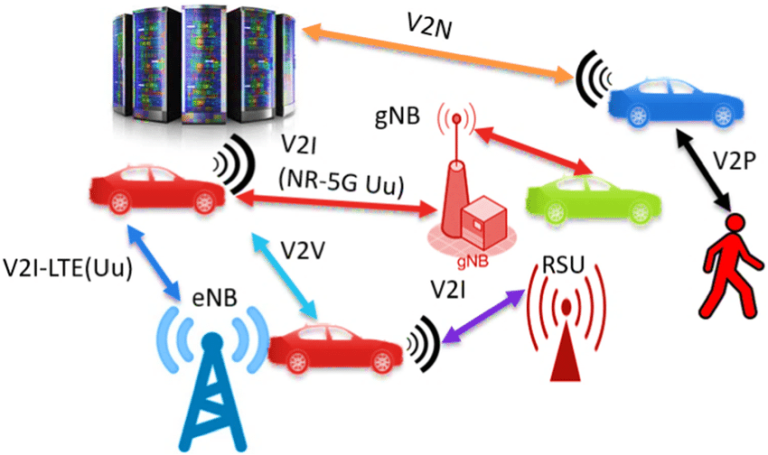Vehicle-to-Everything (V2X) Technology: The Future of Smart Mobility
telcomatraining.com – The automotive industry is undergoing a significant transformation with the advent of smart mobility solutions. Among these, Vehicle-to-Everything (V2X) technology is emerging as a game-changer. V2X enables vehicles to communicate with their surroundings, including other vehicles, infrastructure, pedestrians, and networks. This connectivity improves road safety, optimizes traffic flow, and enhances the overall driving experience. As we move towards fully autonomous driving, V2X technology is set to play a crucial role in shaping the future of transportation.
Understanding V2X Technology
V2X technology is an advanced communication system that allows vehicles to interact with multiple entities in real-time. It comprises several key components:
- Vehicle-to-Vehicle (V2V): Facilitates direct communication between vehicles to prevent collisions and improve traffic efficiency.
- Vehicle-to-Infrastructure (V2I): Connects vehicles with traffic lights, road signs, and other infrastructure to optimize traffic management.
- Vehicle-to-Pedestrian (V2P): Enhances pedestrian safety by alerting drivers to the presence of pedestrians and cyclists.
- Vehicle-to-Network (V2N): Provides connectivity to cloud-based services, enabling navigation updates, weather forecasts, and real-time traffic monitoring.
These components work together to create a safer and more efficient transportation ecosystem.
Benefits of V2X Technology
1. Enhanced Road Safety
V2X reduces accidents by providing real-time alerts about road conditions, obstacles, and potential hazards. Features like collision avoidance, emergency braking, and lane departure warnings help drivers make informed decisions, ultimately reducing fatalities on the road.
2. Traffic Efficiency and Reduced Congestion
By enabling seamless communication between vehicles and traffic management systems, V2X helps in optimizing traffic flow. It reduces congestion by providing alternate route suggestions and coordinating traffic signals based on real-time data.
3. Lower Environmental Impact
V2X technology contributes to sustainability by improving fuel efficiency and reducing carbon emissions. Intelligent traffic management minimizes unnecessary idling, while connected vehicles can optimize fuel consumption through predictive driving strategies.
4. Support for Autonomous Driving
Autonomous vehicles rely heavily on V2X communication to navigate safely. By continuously exchanging data with surrounding elements, self-driving cars can anticipate road conditions, detect obstacles, and make decisions with greater accuracy.
Challenges and Future Prospects
Despite its potential, V2X technology faces several challenges:
- Infrastructure Development: Widespread adoption of V2X requires significant investment in smart infrastructure, including sensors, communication networks, and roadside units.
- Cybersecurity Concerns: As vehicles become more connected, they are vulnerable to cyberattacks. Robust encryption and security protocols are necessary to safeguard data transmission.
- Interoperability Issues: Standardization across different manufacturers and regions is essential for seamless communication between vehicles and infrastructure.
Looking ahead, advancements in 5G technology and Artificial Intelligence (AI) will further enhance V2X capabilities. Governments and automotive companies are working towards developing standardized protocols and investing in smart city initiatives to accelerate V2X deployment.
Conclusion
Vehicle-to-Everything (V2X) technology is revolutionizing the transportation sector by making roads safer, reducing congestion, and supporting the transition to autonomous vehicles. Despite challenges, continuous technological advancements and infrastructural improvements will drive its adoption. As we move towards a smarter and more connected world, V2X will be a cornerstone of future mobility solutions, paving the way for safer and more efficient transportation systems.







